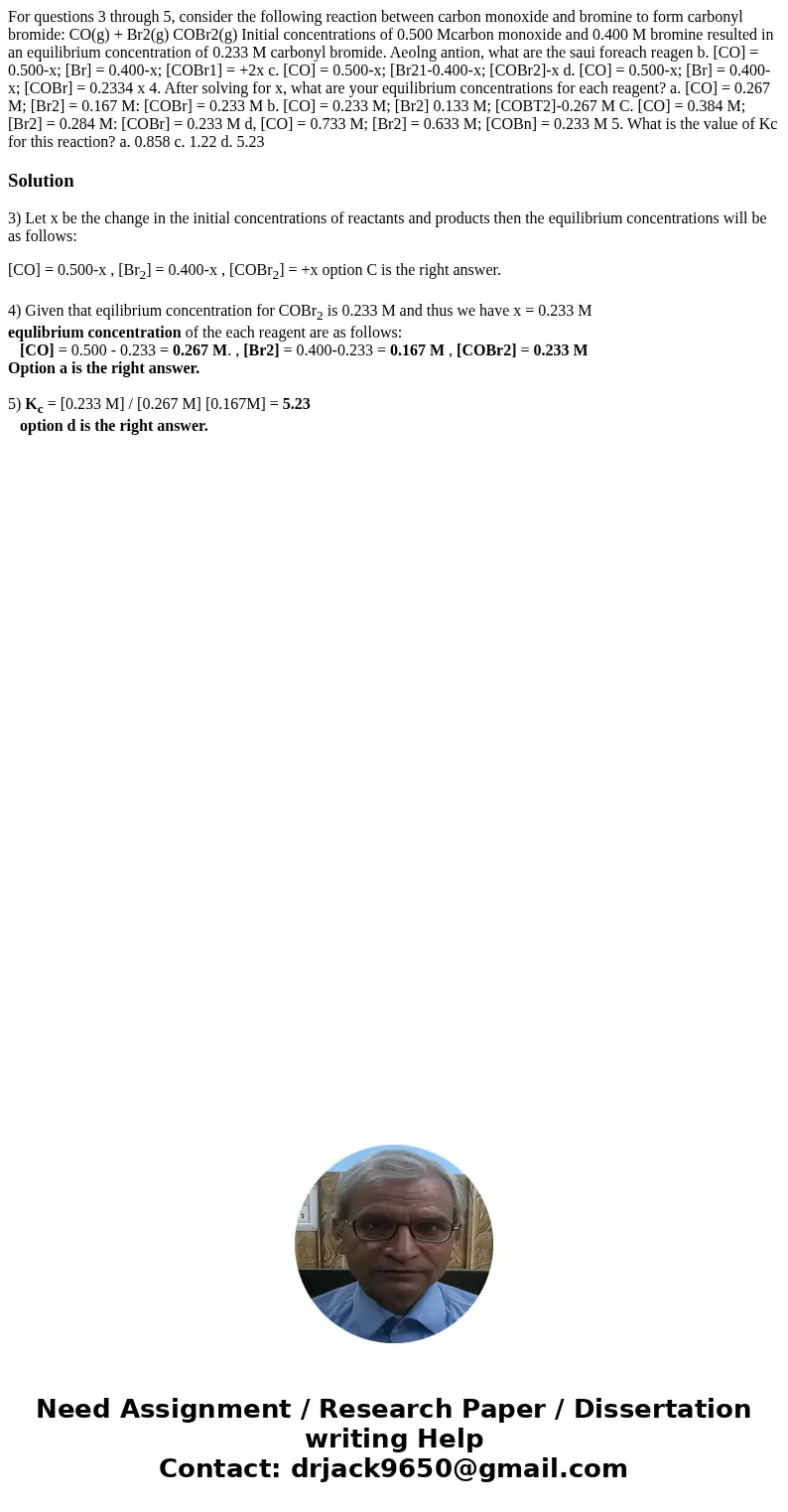For questions 3 through 5 consider the following reaction be
For questions 3 through 5, consider the following reaction between carbon monoxide and bromine to form carbonyl bromide: CO(g) + Br2(g) COBr2(g) Initial concentrations of 0.500 Mcarbon monoxide and 0.400 M bromine resulted in an equilibrium concentration of 0.233 M carbonyl bromide. Aeolng antion, what are the saui foreach reagen b. [CO] = 0.500-x; [Br] = 0.400-x; [COBr1] = +2x c. [CO] = 0.500-x; [Br21-0.400-x; [COBr2]-x d. [CO] = 0.500-x; [Br] = 0.400-x; [COBr] = 0.2334 x 4. After solving for x, what are your equilibrium concentrations for each reagent? a. [CO] = 0.267 M; [Br2] = 0.167 M: [COBr] = 0.233 M b. [CO] = 0.233 M; [Br2] 0.133 M; [COBT2]-0.267 M C. [CO] = 0.384 M; [Br2] = 0.284 M: [COBr] = 0.233 M d, [CO] = 0.733 M; [Br2] = 0.633 M; [COBn] = 0.233 M 5. What is the value of Kc for this reaction? a. 0.858 c. 1.22 d. 5.23 
Solution
3) Let x be the change in the initial concentrations of reactants and products then the equilibrium concentrations will be as follows:
[CO] = 0.500-x , [Br2] = 0.400-x , [COBr2] = +x option C is the right answer.
4) Given that eqilibrium concentration for COBr2 is 0.233 M and thus we have x = 0.233 M
equlibrium concentration of the each reagent are as follows:
[CO] = 0.500 - 0.233 = 0.267 M. , [Br2] = 0.400-0.233 = 0.167 M , [COBr2] = 0.233 M
Option a is the right answer.
5) Kc = [0.233 M] / [0.267 M] [0.167M] = 5.23
option d is the right answer.

 Homework Sourse
Homework Sourse